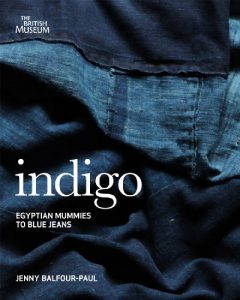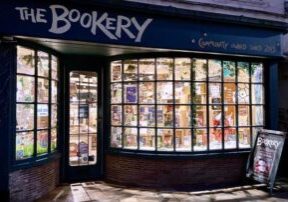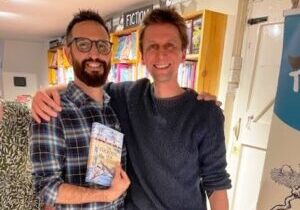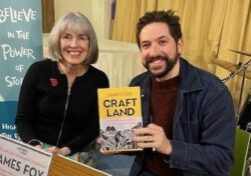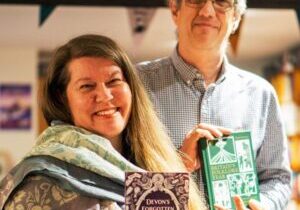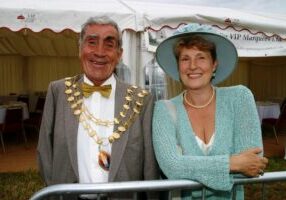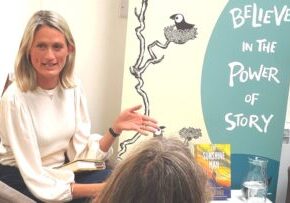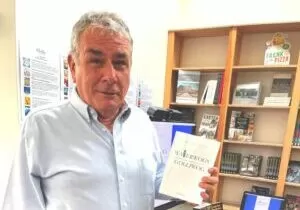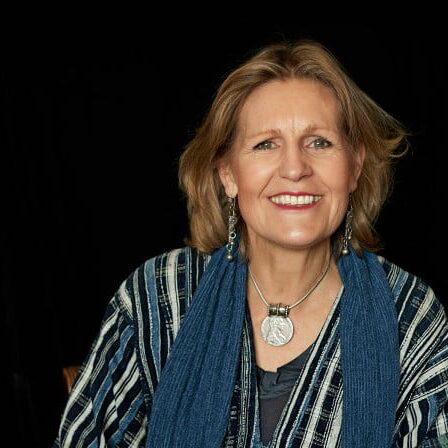
Jenny Balfour-Paul is a writer, artist, international lecturer and intrepid traveller, with a life-long love of India. On Thursday 5th October we’ve an event with Jenny entitled Independence Blues: Stories of India, Indigo and Gandhi.
Our favourite question to ask authors is ‘What book changed your life?’ and Jenny Balfour-Paul had a cracking answer.
Q: What book changed your life?
A: E. M. Forster’s last novel, A Passage to India, was a set book in my school English class and had a profound influence on me from many points of view. Having never travelled beyond Europe, I was fascinated by the descriptions of India, as well as the characters, story and intriguing ambiguities. It happens to have special relevance this year, with its historical undercurrent being the gathering momentum towards Indian Independence. Knowing how disastrous Partition turned out to be adds poignancy for post-war readers, since the main Indian character, Aziz, a Muslim working for a Hindu, believes India will unite peacefully when the British leave.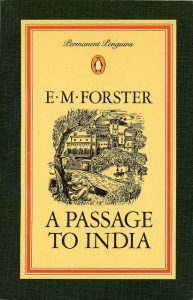
Forster avoids cliché to depict the beauty, smells, sounds, threats and paradoxes of the 1920s Indian subcontinent (as it was then) in all its complexity. I was woefully ignorant about Indian history, but responded to the brilliant portrayal of tension between ruler and ruled, those with stereotypical viewpoints and others trying to transcend expectations. Indefinable borderlines are Forster’s territory, and later (subconsciously) became mine as a writer. He moves with ease between earthly and more metaphysical realms. In my latest book Deeper than Indigo, when describing a mysterious incident of my own in India (in the Malabar hills) I quoted from a conversation between Adela Quested and Cyril Fielding when they grope for words to explain what happened to the former in the Marabar caves:
‘She was at the end of her spiritual tether and so was he. Were there worlds beyond which they could never touch, or did all that is possible enter their consciousness? They could not tell…..Perhaps life is a mystery, not a muddle. They could not tell. Perhaps the hundred Indias which fuss and squabble so tiresomely are one, and the universe they mirror is one. They had not the apparatus for judging.’
On first reading I related to Quested, since, like most teenagers, I liked to think I was somehow ‘different’ so was drawn to a character who defied the norms of Raj Society. Her attraction to an Indian also seemed exotic. This single book fixed my own passion to find a passage to India, though the idea was in the air in that era of the overland Hippie trail to Kathmandu. I talked my way into University on the back of this book, bombarding the interviewer with my enthusiasm.
After wandering around India and Sri Lanka alone in my 1970 ‘gap year’, life unexpectedly took me to the Arab world after University and I didn’t return to India until the 1990s, when researching Indigo; Egyptian Mummies to Blue Jeans. However, I didn’t re-read A Passage to India until 2010, when I was nearing completion of Deeper than Indigo. I had work in India and decided to travel there slowly by sea, echoing my maritime return voyage from India around the Cape of Good Hope in 1970. I boarded a huge container ship alone in Southampton docks, having packed at the last minute my original worn 1960s annotated paperback of A Passage to India. The time seemed apt to revisit the novel but it was only on re-reading it, to the background thrum of the engine and banging of containers (and with a grumpy Captain expressing his hope that I didn’t die on board!) did I realise I had grown in parallel with the main female characters. This is how I put it in a section in Deeper than Indigo addressed directly to 19th century Thomas Machell:
‘I’m re-reading Forster’s A Passage to India, which influenced my adolescence and led to you. Written sixty years after you died, when the British were still running their Empire with patronising certainties, in many ways it’s nearer to your experiences than to mine. The two main female British characters embarrass their community, as you did, by wishing to explore ‘the real India’. It’s forty years since I first read the book and made my own first passage to India, ignorant as the main young English character, Miss Quested. Now I’ve almost turned into her companion, Mrs Moore (also widowed with two children), and can relish her perspective: ‘She did not take the disappointment as seriously as Miss Quested, for the reason that she was forty years older, and had learnt that Life never gives us what we want at the moment that we consider appropriate. Adventures do occur, but not punctually.’’
I am a keen reader – as all writers should be of course – but of all the books I have read, this one did truly change my life.
About Jenny Balfour-Paul
An Honorary Research Fellow at Exeter University, Jenny is a Fellow, Councillor and Trustee of the Royal Geographical Society, a Fellow of the Royal Asiatic Society and New York’s Explorers Club and President of the UK’s Association of Guilds of Weavers, Spinners and Dyers.
Jenny is involved in research into dyes recovered from shipwrecks, is a partner in ‘Silk Road Connect’, an educational initiative launched by cellist Yo-Yo Ma’s Silk Road Project in New York in 2009, and promotes revivals of natural dyes throughout the world.
Buy her books!
Jenny is the author of two books: Indigo: Egyptian Mummies to Blue Jeans and Deeper than Indigo. Get your copies or your own A Passage to India today!
September 19, 2017
Blog > Interviews > Jenny Balfour-Paul

